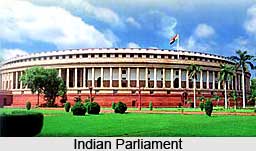 Statutory committees have been one of the auxiliary machineries established by the Government of India to aid and advise the Government on some particular issues which are granted to the specific committees. Nearly eight percent of the total numbers of advisory committees within the Central government are statutory committees which functions as the advisory council for various departments. These committees are established under the statutory enactments that ensure their permanence and independence. Largely deciding upon some less important matters these committees usually meet twice a year and conduct a meeting that lasts in a day.
Statutory committees have been one of the auxiliary machineries established by the Government of India to aid and advise the Government on some particular issues which are granted to the specific committees. Nearly eight percent of the total numbers of advisory committees within the Central government are statutory committees which functions as the advisory council for various departments. These committees are established under the statutory enactments that ensure their permanence and independence. Largely deciding upon some less important matters these committees usually meet twice a year and conduct a meeting that lasts in a day.
Statutory Committees of India comprises of some important committees like the Central Advisory Council of Industries, Development Councils (17 in number), Company Law Advisory Commission, and Advisory Committee on Capital Issues, Minimum Wages Central Advisory Board, and Central Committee for Food Standards, Zonal Councils (five in number), etc. The Statutory committees are established under the Industrial Development and Regulation act,1951 and function under Central Advisory Council of Industries.
Statutory Committee while functioning also includes some standing committees which meet biennially and a number of sub committees which help them to function more accurately and faster. During its sessions these committees usually enter into debates in which all the parties get their fair chance to participate. While it has been blamed for loosing its touch with reality; these committees have been further blamed for lingering with some issues which are either irrelevant or invalid. As such the government has full rights to curtail the powers of these committees as it reduced some powers of Central Advisory council of Industries in 1951.
Thus the Statutory Committees which are formed by the Indian Parliament are mainly intended to reduce the burden of decision making on the central government which can share some of the less important decisions on these committees. These committees shall render decisions on behalf of the Government of India which will contain the same strength as a law of the nation.




















